British student's wearable CNC machine gives makers "superhuman" abilities
Aiming to bridge the worlds of human and robotic construction, product design engineer Jasper Mallinson has created a wearable CNC machine that he believes could one day be used on worksites to help realise parametric designs.
The Mecha-morphis device was Mallinson's final project from the Innovation Design Engineering masters course, run by the Royal College of Art and Imperial College London.
It serves as a type of computer numerical control (CNC) machine – manoeuvring different tools based on a path set by a computer – but one that is relatively lightweight, portable and able to combine with human control.
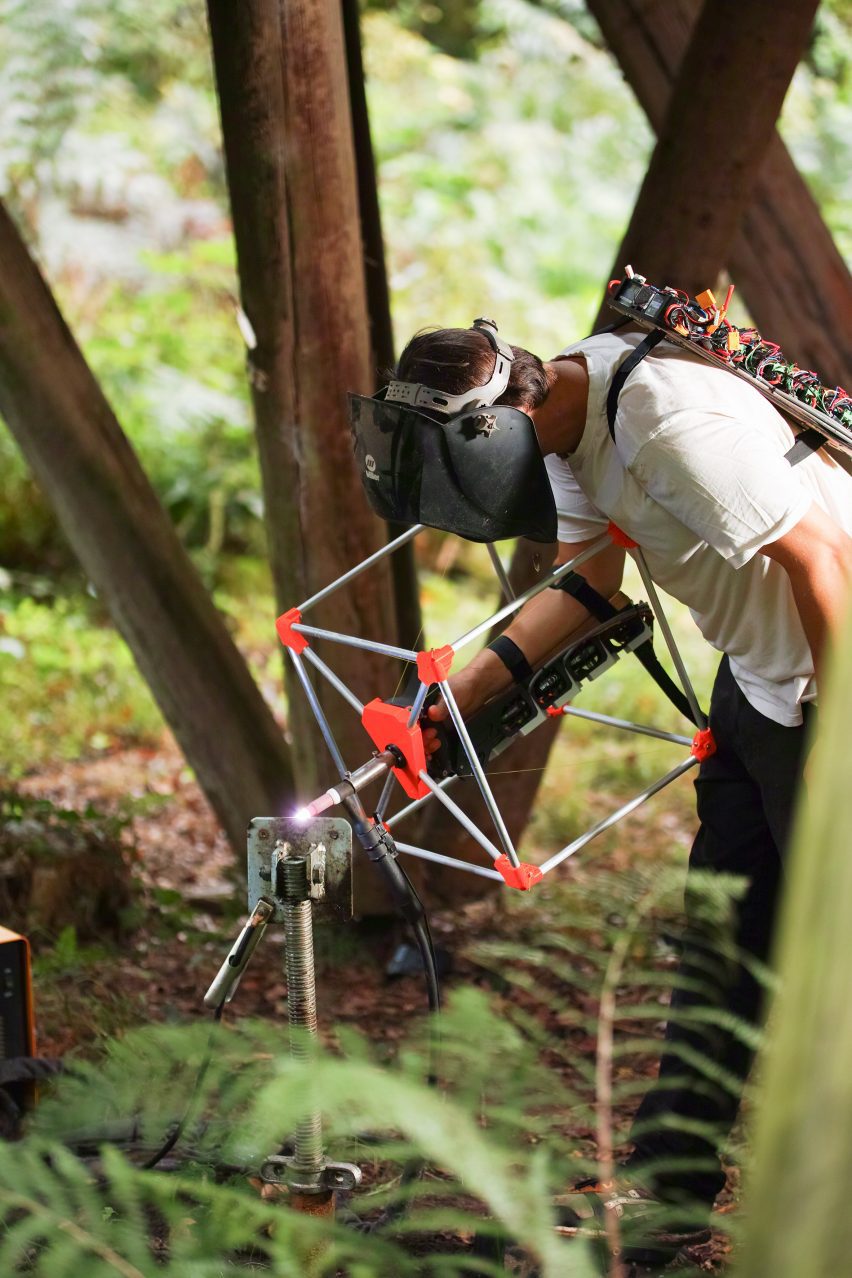
Mallinson describes the device as "a one-handed exoskeleton for superhuman precision". The design came out of his exploration into how digital fabrication technologies could be used to augment rather than replace human making abilities.
"Instead of thinking about digital fabrication as something separate to human makers, I wanted this combination of the two to become the core of my project," he told Dezeen.
"I wanted to lean into the idea of a universal making machine, something ultimately flexible that could be used with almost any tool and augment almost any making process."
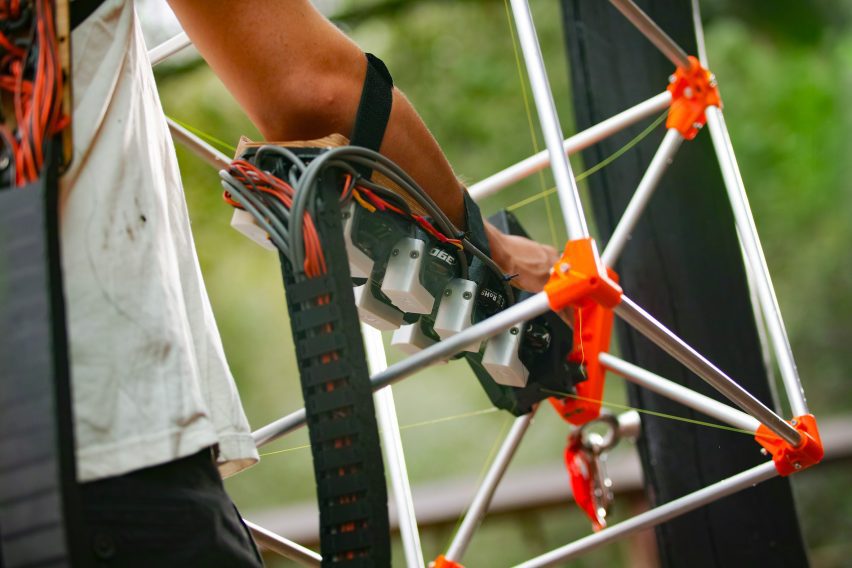
"The project did not follow a problem-solution type design process at all," he added. "Instead, I wanted to play within this relatively unexplored design space that seemed like it would let me build something a bit insane."
The design of Mecha-morphis incorporates eight motors that are worn on one arm to control the movement of a cube-shaped frame with a tool attached to its front face.
Theoretically, these tools could include routers, drills or plasma cutters, although so far Mallinson has tested the prototype with just a relatively safe pencil and welding torch.
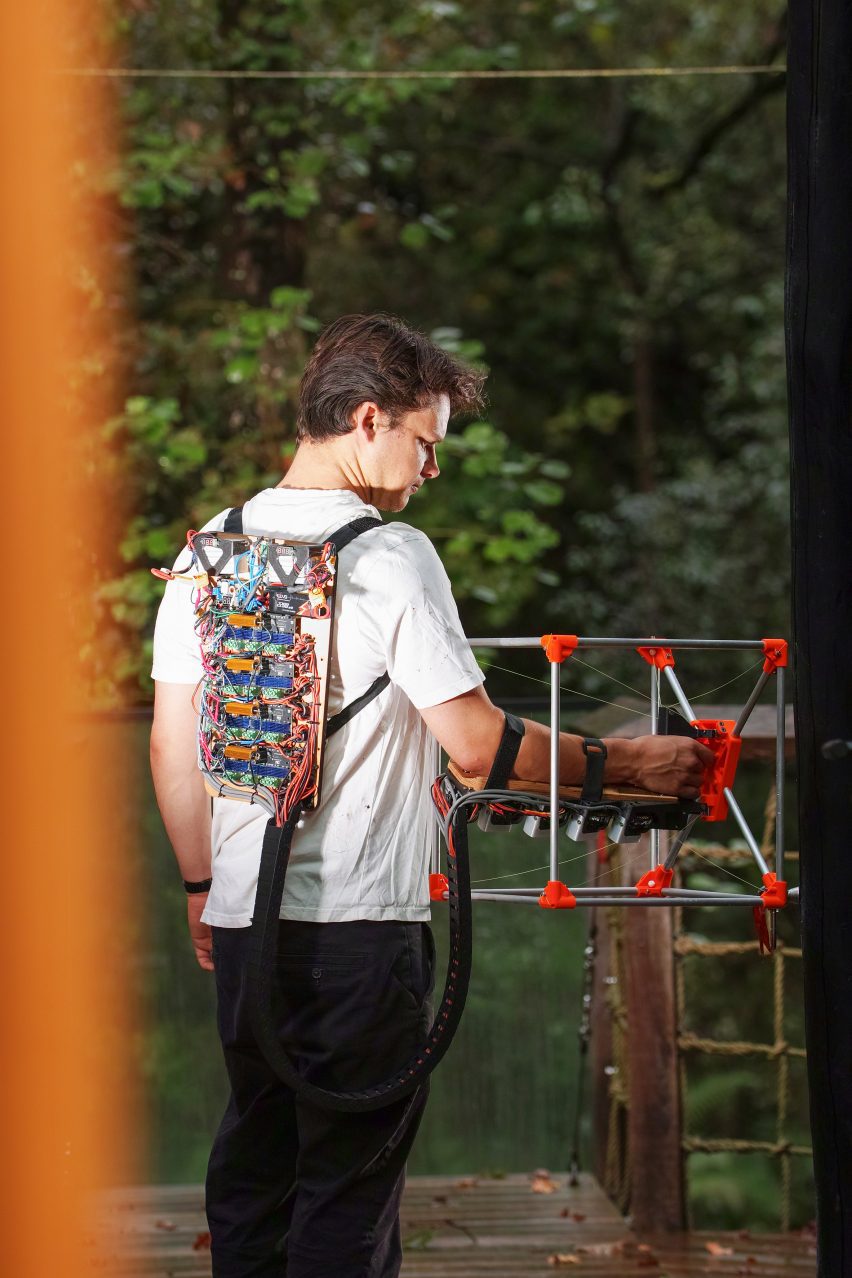
The frame can move on six axes, giving it six degrees of freedom while moving relatively freely and smoothly around the user's hand.
Mallinson aims for the device to offer a full spectrum of control ranging from a completely manual mode to an entirely autonomous mode, with stops in between offering stabilisation or limited human override.
The apparatus is attached by cables to a "backpack" housing the computer and circuitry that drives and monitors the motors.
While Mallinson may have started the project driven by conceptual preoccupations, he began to see real practical benefits to his invention following conversations with computational architects and construction workers.
On the ground, these practitioners had observed that, while algorithmically designed structures were becoming more common, digital fabrication methods had not caught up.
This could result in "potentially dangerous" changes to the design during construction, Mallinson explained.
"Complex parametric architecture is often particularly challenging to construct," said the engineer. "There is still a reliance on manual construction methods, which from conversations with site welders I found subject to more human judgement than expected, leading to deviations from the original model."
"These parametric designs emerge from many functional requirements being fed through unintuitive algorithms and so deviations in final outcome can be higher risk than with traditional buildings."
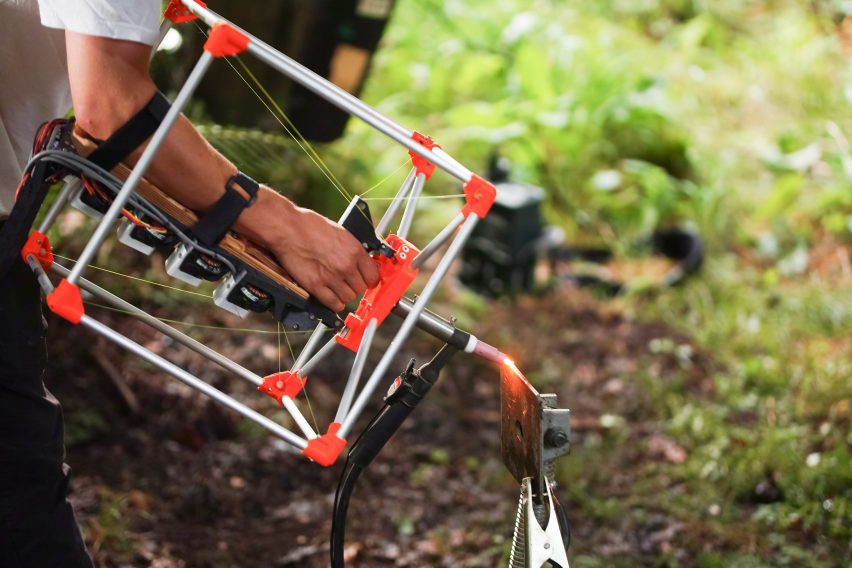
Mallinson points to the use of augmented reality for parametric bricklaying and the position-correcting handheld Shaper Origin router as two advancements in this area that have inspired his work.
He also sees an opportunity in the fact that Mecha-morphis liberates digital fabrication from the workshop and enables it to go wherever a human can go, with the spectrum of control options opening up new possibilities as well.
"By preserving as much human control and flexibility where possible, the device can hopefully become useful in more ambiguous tasks where digital fabrication struggles today, such as in repair, modification or remanufacture," said Mallinson.
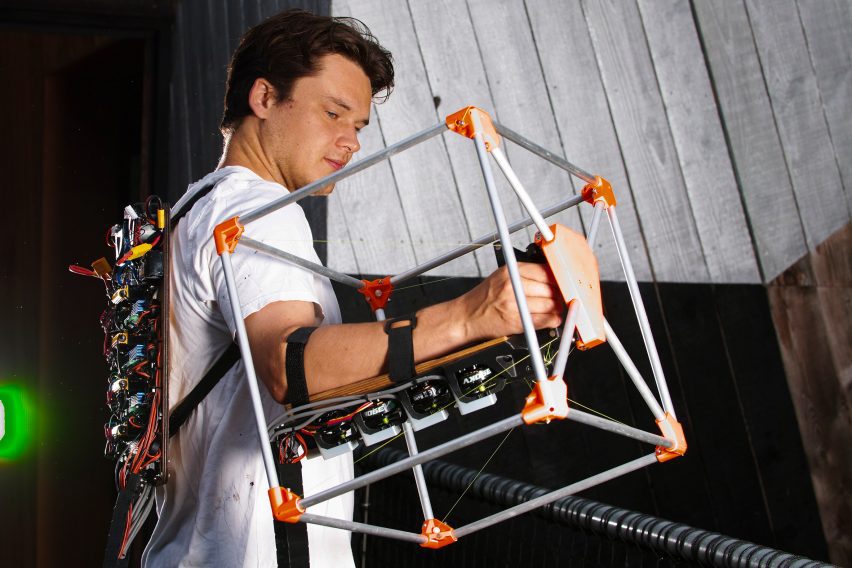
Mallinson is still developing his Mecha-morphis prototype and is currently focused on adding position-tracking functionality using technology from the virtual reality industry.
This is a critical step that will allow the device to achieve Mallinson's desired "superhuman precision" and complete tasks such as drilling circuit boards and welding superstructures, the engineer said.
An example of digital and manual methods being combined to realise complex architecture is in SOM and Princeton University's Angelus Novus Vault, built earlier this year in Venice by a bricklayer using augmented reality goggles.
Photography by Sandy Steele-Perkins.